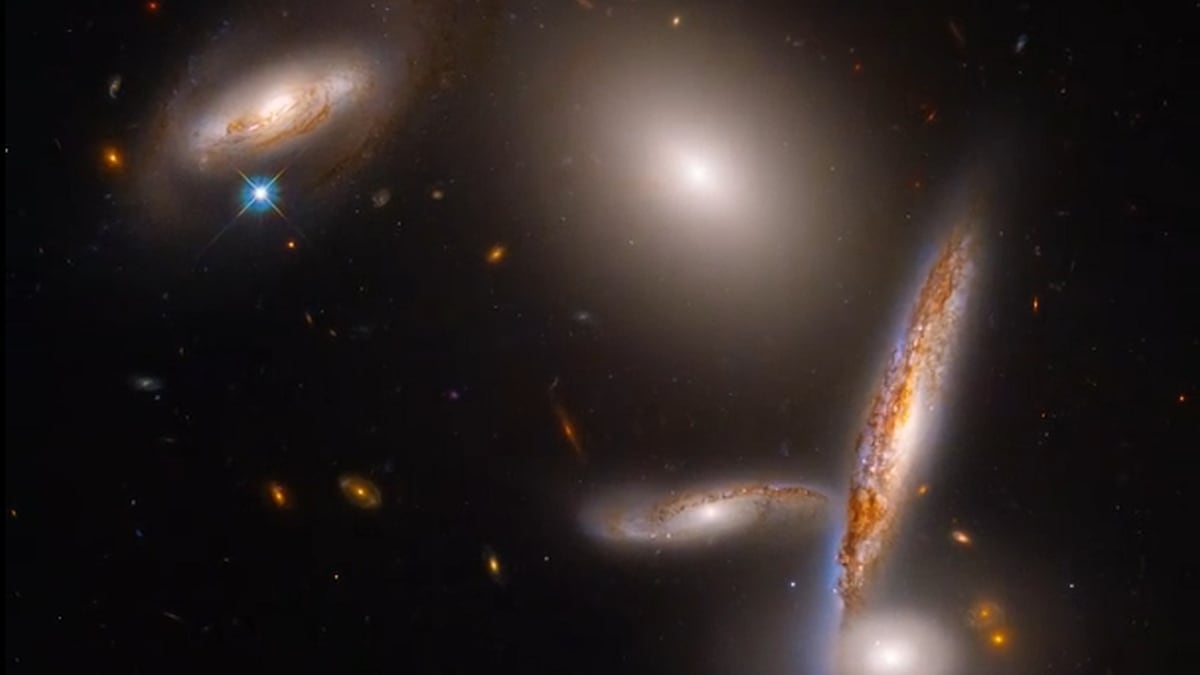Products You May Like
NASA is celebrating the 32nd anniversary of the Hubble Space Telescope (aka HST or Hubble) by sharing a stunning view of five galaxies in deep space depicted in a single image. To recall, the Hubble Space Telescope was launched on April 24, 1990, and deployed the next day. Thus, this week serves as the telescope’s 32nd anniversary or birthday. It entered service on May 20, 1990.
As for the image shared by NASA, it is of a group of galaxies called the Hickson Compact Group 40. This closely knit group includes a giant elliptical galaxy glowing with blended light from billions of stars, three spiral galaxies, and a lenticular (lens-like) galaxy. Somehow these different galaxies of forms and shapes crossed paths in deep space as part of the evolution process and created an exceptionally crowded region. The image is part of a video where Hubble’s senior project scientist Dr. Jennifer Wiseman explains what is shown, and the importance of the telescope.
In the video, Wiseman explained that the galaxies in the Hickson Compact Group 40 are held together in a gravitational dance. “The group is so crowded that it can fit within a space less than twice the span of our own Milky Way galaxy’s disk,” she added.
The scientist said that these individual galaxies will eventually collide and merge together to form one giant elliptical galaxy “in about 1 billion years”. She said all these scientific observations, discoveries and deductions have been made possible because of Hubble, whose deep field images have made it possible for us to see across billions of light-years.
Astronomers have used Hubble to see some of the most distant celestial objects and events. During its three decades of operation, the observatory has undergone upgrades by five astronaut servicing missions and its capabilities have grown immensely. Still, that it is aging remains a fact. Hubble’s greatest benefit has been its wide range of visibility. Its domain extends from the ultraviolet through the visible (which our eyes see) and into the near-infrared. Because Hubble is placed far above rain clouds, light pollution, and atmospheric distortions, it has a clear view of the universe. Hubble has made more than 1.5 million observations over the course of its lifetime, according to NASA.
The Hubble Space Telescope is a project of international cooperation between US and European space agencies.
